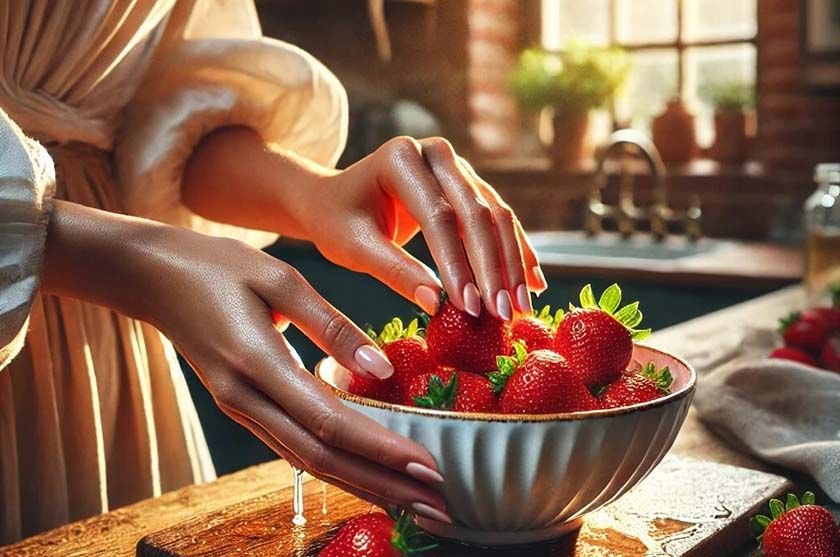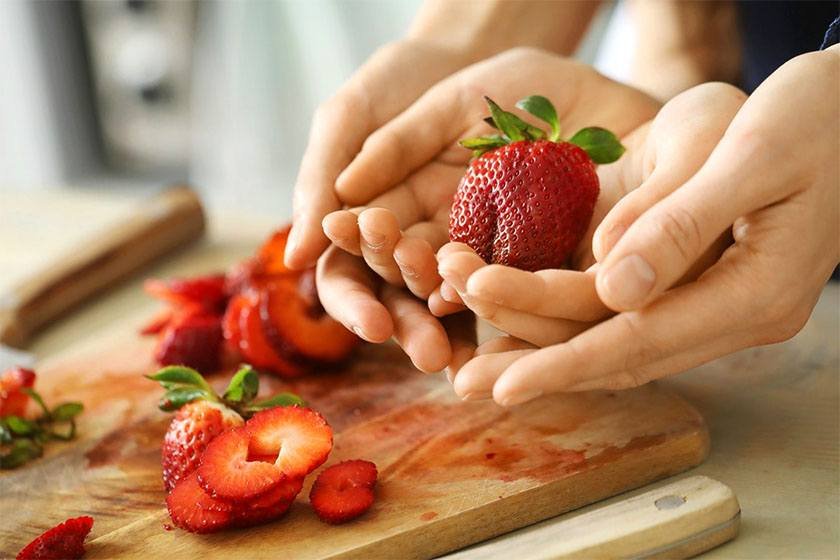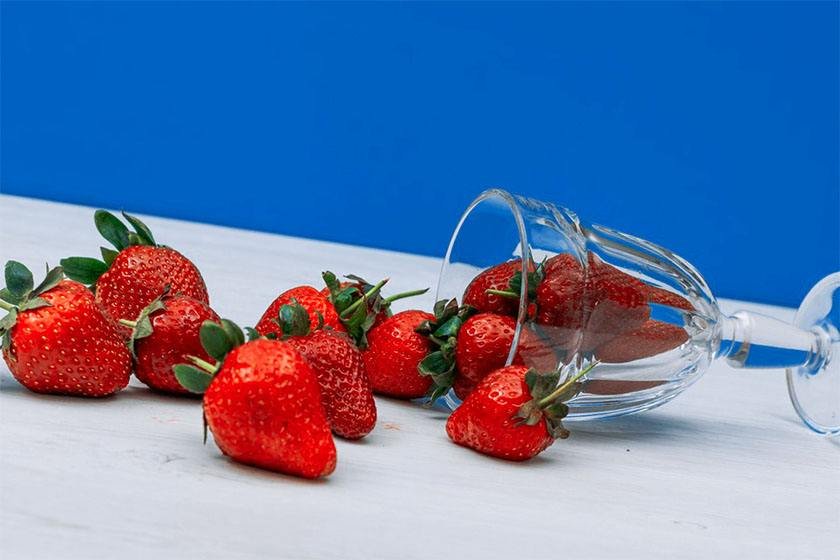Cleaning strawberries is essential for both safety and flavor. To ensure you’re removing dirt, pesticides, and bacteria effectively, it’s important to follow the best way to clean strawberries before enjoying these delicious fruits.
Proper cleaning enhances both their taste and safety, making it a crucial step before consumption. This guide will explore the best methods for washing strawberries, ranging from simple rinses to vinegar solutions, and will discuss the benefits of each technique.
Additionally, it will cover the risks associated with neglecting this important task, provide information on how to store cleaned strawberries, and offer tips for freezing them.
By following this guide, you can ensure your strawberries are as fresh and safe as possible.
Why Is It Important to Clean Strawberries?
Cleaning strawberries is essential not only for enhancing their natural flavor but also for ensuring food safety and protecting your health. Like many perishable items, strawberries can harbor surface dirt, pesticides, and harmful microorganisms that may pose risks when consumed.
By employing effective cleaning methods, you ensure that these delicate fruits remain safe to eat while retaining their nutritional value. Furthermore, properly washing strawberries maximizes their flavor and contributes to a clean eating lifestyle, making it crucial to incorporate effective rinsing techniques into your kitchen hygiene practices.
What Are the Best Ways to Clean Strawberries?
To ensure that fresh strawberries are both safe to eat and delicious, it is essential to employ the correct washing techniques. There are various methods available to effectively wash strawberries, each with its own advantages and disadvantages.
This section will explore the best practices for cleaning strawberries, ranging from a simple rinse with water to utilizing natural cleaning solutions like vinegar and baking soda, all aimed at ensuring proper food preparation and maintaining kitchen hygiene.
1. Rinse with Water
Rinsing strawberries with water is one of the simplest and most effective methods to clean them. This technique involves placing the strawberries under running water for about 30 seconds to a minute, which allows you to remove surface dirt, sand, and any potential pesticide residues.
It is essential to use cool or lukewarm water for rinsing, as hot water can lead to the breakdown of the delicate fruit and affect its texture. This method is not only quick and easy but also preserves the flavor and health benefits of fresh strawberries.
By adopting this straightforward approach, you ensure that the berries remain fresh and tasty for longer periods. When rinsing, gently hold the berries to avoid bruising; being delicate during this process can significantly enhance their longevity.
After rinsing, consider air-drying them on a clean cloth or paper towel, as excess moisture can promote mold growth, jeopardizing their freshness. This thorough washing method not only safeguards the strawberries’ vibrant flavor but also ensures that every bite is as nutritious as possible, allowing you to fully appreciate their numerous health benefits.
2. Soak in Vinegar Solution
 Soaking strawberries in a vinegar solution is an effective cleaning method that helps remove pesticides while acting as a natural disinfectant.
Soaking strawberries in a vinegar solution is an effective cleaning method that helps remove pesticides while acting as a natural disinfectant.
By mixing one cup of white vinegar with three cups of water, you can create a gentle cleaning solution that thoroughly cleanses the strawberries. Allow them to soak for about five to ten minutes, and then rinse them under cool water to eliminate any vinegar taste. This method not only enhances food safety but also helps maintain the health benefits of the strawberries.
Utilizing this vinegar solution provides a simple yet powerful means to ensure that pesticides are effectively washed away, safeguarding your health. The natural acidity of vinegar breaks down residues, making the strawberries safer to consume without relying on harsh chemicals. This practice supports a cleaner diet and promotes sustainable cleaning techniques, which are appealing to those conscious of their environmental impact.
After rinsing, the strawberries are free of pesticide traces and retain their freshness, making them perfect for your favorite recipes or as a delightful snack. This is the best way to clean strawberries, ensuring they are both safe to eat and deliciously fresh.
3. Use a Commercial Fruit and Vegetable Wash
Using a commercial fruit and vegetable wash is an effective method for cleaning strawberries, as these products are specifically designed to remove dirt, wax, and pesticide residues.
Simply adhere to the instructions on the label, which typically involve spraying or soaking the strawberries in the solution, followed by rinsing them thoroughly with water. This approach is particularly beneficial for individuals focused on maximizing food safety and ensuring that their fresh produce is clean and safe for consumption.
These washes provide convenience, allowing you to clean your strawberries thoroughly with minimal effort. While they can be highly effective, it is important to consider potential drawbacks, such as the presence of unwanted chemicals in some formulations. Proper usage is essential; failing to follow the manufacturer’s instructions may diminish their effectiveness.
Thus, striking a balance between the convenience of these products and a keen awareness of their contents – while diligently following guidelines – ensures that you can enjoy your fruits while prioritizing health and safety.
4. Use a Homemade Baking Soda Solution
Creating a homemade baking soda solution is an effective and cost-efficient method for cleaning strawberries, utilizing the natural cleaning properties of baking soda. By mixing one teaspoon of baking soda with two cups of water, you can produce a solution that effectively lifts dirt and pesticide residues from the surface of the strawberries.
Soaking the strawberries in this solution for about five to ten minutes, then rinsing them under cool water, is the best way to clean strawberries thoroughly without harming their delicate texture.
This approach not only enhances the safety of consuming strawberries but also helps retain their vibrant flavor. After the soaking period, gently swishing the strawberries in the solution can further dislodge any stubborn particles. Rinsing them under cool, running water will remove any remaining baking soda, ensuring that your fruit is free from residues.
Regular use of this natural cleaning method can promote healthier eating habits, as it encourages the consumption of strawberries.
What Are the Benefits of Each Cleaning Method?
 Understanding the benefits of various cleaning methods for strawberries is essential for maximizing their flavor and health benefits. Each cleaning technique presents unique advantages, whether it involves a simple rinse with water, soaking in vinegar, using commercial washes, or applying a homemade baking soda solution.
Understanding the benefits of various cleaning methods for strawberries is essential for maximizing their flavor and health benefits. Each cleaning technique presents unique advantages, whether it involves a simple rinse with water, soaking in vinegar, using commercial washes, or applying a homemade baking soda solution.
Knowing which method to use can enhance food safety, optimize nutrient preservation, and contribute to a clean eating lifestyle. This section will explore the specific benefits of each cleaning method and their impact on fruit quality.
1. Water Rinse
The primary benefit of rinsing strawberries with water lies in its simplicity and effectiveness in removing surface dirt and microorganisms without compromising the fruit’s natural flavor. This method is safe and requires no additional ingredients, making it a preferred choice for many home cooks.
Rinsing helps maintain the freshness of the strawberries and prevents bruising, ensuring they remain visually appealing and nutrient-rich for family meals.
This gentle cleaning technique not only protects the fruit from harmful residues but also enhances its overall quality. With just a quick rinse under cool water, you can enjoy delicious, clean strawberries without concern for harmful chemicals.
This approach is incredibly convenient, allowing for quick preparation, whether for a snack, dessert, or as a vibrant addition to salads. The best way to clean strawberries ensures that you are providing safe, wholesome fruit for your loved ones, while also allowing you to enjoy their delightful taste and health benefits.
2. Vinegar Soak
Soaking strawberries in a vinegar solution offers distinct benefits, particularly in its effectiveness at removing harmful bacteria and pesticides. This method enhances food safety, making it an excellent choice for individuals who purchase organic strawberries and wish to ensure they are thoroughly clean. The natural acidity of vinegar can also help prolong the freshness of the strawberries, providing an additional layer of protection against spoilage.
By utilizing vinegar as a cleaning agent, you can maintain the quality of strawberries while also reducing the risk of foodborne illnesses. The antimicrobial properties of vinegar assist in eliminating potential pathogens, ensuring that every bite is safe and healthy.
The best way to clean strawberries is a simple and cost-effective solution that contributes to a more sustainable lifestyle, as it minimizes the need for chemical preservatives.
By incorporating vinegar into your food preparation routine, you not only enhance the shelf life of your produce but also gain peace of mind knowing your food is as fresh and clean as possible.
3. Commercial Wash
Using a commercial fruit wash offers several advantages, particularly regarding effectiveness and convenience. These products are specifically formulated to target residues and contaminants, making them a reliable choice for individuals who prioritize food safety in their kitchens. Utilizing a commercial wash can save you time in the cleaning process, allowing you to enjoy your strawberries sooner without compromising quality.
These washes often contain ingredients designed to eliminate pesticides, waxes, and harmful bacteria, ensuring that the fruits are not only visually appealing but also safe to consume. The ease of use further enhances their appeal; simply rinsing fruit with a commercial wash can remove impurities more efficiently than water alone.
However, it’s crucial to consider potential drawbacks, such as the environmental impact of certain chemical ingredients in some washes, which might raise concerns for eco-conscious consumers.
Balancing effectiveness and safety is essential, reinforcing the importance of choosing high-quality products that align with both health standards and personal values, especially when considering the best way to clean strawberries for optimal freshness and health.
4. Baking Soda Solution
The homemade baking soda solution is an excellent option for health-conscious cooks, offering a natural cleaning method that effectively removes surface dirt and bacteria. This technique not only ensures a thorough clean but also keeps harmful chemicals at bay, aligning with sustainable practices and clean eating principles.
By using baking soda, you can feel confident that you are preparing strawberries that are both safe and flavorful for your family meals.
The baking soda solution also serves as an eco-friendly way to address stubborn stains and odors in the kitchen, ensuring a cleaner environment without the need for harsh chemicals.
What Are the Risks of Not Cleaning Strawberries?
Failing to clean strawberries properly poses several risks that can lead to health issues and food safety concerns. Unwashed strawberries can harbor harmful bacteria, pesticides, and dirt, resulting in contamination and potentially serious health problems when consumed.
By neglecting proper cleaning techniques, you also compromise the flavor and overall quality of this delicate fruit. To maintain proper kitchen hygiene, it is crucial to focus on the best way to clean strawberries as part of your routine.
The risks associated with consuming unclean strawberries can be quite serious. Contaminants like E. coli and Salmonella thrive on improperly washed produce, leading to foodborne illnesses that can cause symptoms ranging from nausea to severe gastrointestinal distress.
Additionally, the presence of residual pesticides presents long-term health risks, including hormonal disruptions and potential carcinogenic effects. The dangers are particularly magnified for individuals with weakened immune systems, children, and the elderly.
Ensuring thorough washing not only safeguards health but also enhances the enjoyment of these vibrant, sweet fruits for everyone involved.
How to Properly Store Cleaned Strawberries?
 Properly storing cleaned strawberries is essential for maintaining their freshness and flavor after washing. After thorough cleaning, it is important to dry them completely to prevent excess moisture, which can lead to spoilage.
Properly storing cleaned strawberries is essential for maintaining their freshness and flavor after washing. After thorough cleaning, it is important to dry them completely to prevent excess moisture, which can lead to spoilage.
Additionally, using a clean container for storage is crucial, as it helps prevent contamination and preserves the quality of the fruit. This section outlines best practices for storing strawberries to ensure they remain delicious and safe to eat for an extended period.
1. Dry Completely
Drying strawberries completely after cleaning is a crucial step to prevent moisture issues that can lead to spoilage. Gently pat the strawberries dry with a soft cloth or paper towels to ensure that excess water does not compromise their texture and flavor.
One of the best ways to clean strawberries is by using this simple kitchen tip, which helps maintain their quality and keeps them fresh longer, allowing you to fully enjoy their health benefits.
Utilizing tools such as salad spinners can enhance the drying process, as they effectively remove water without bruising the delicate fruit. For those who prefer a hands-off approach, a clean, low-speed fan can aid in air drying while preserving the fruit’s integrity.
By prioritizing this drying step, you ensure that the strawberries not only look appealing but also retain their sweetness and crispness, making them an ideal ingredient for salads, desserts, or smoothers.
2. Store in a Clean Container
Storing cleaned strawberries in a clean container is essential for preventing contamination and preserving their quality. It is advisable to choose a container that allows for air circulation, such as a colander or a shallow bowl, to avoid moisture buildup that can lead to spoilage. This practice not only keeps the strawberries safe to eat but also ensures that their flavor and health benefits are retained.
Utilizing containers made of breathable materials, like woven baskets or perforated plastic, can greatly enhance airflow and further mitigate the risk of mold development. It is also prudent to avoid stacking strawberries too deeply; a single layer prevents crushing while promoting even air circulation.
Keeping the selected containers in a cool environment, such as the refrigerator, contributes to longer-lasting freshness as well. By prioritizing cleanliness and air circulation, you can significantly minimize the chance of cross-contamination and ensure that each strawberry remains a delightful, nutritious treat.
3. Refrigerate Immediately
Refrigerating cleaned strawberries immediately is essential for preserving their freshness and extending their shelf life. Since strawberries are perishable items, storing them in the fridge helps slow down spoilage, ensuring they remain delightful and nutritious for your culinary needs. This straightforward yet effective storage tip is vital for maintaining the flavor and texture of strawberries, allowing you to incorporate them into various recipes.
To optimize the freshness of strawberries, it is best to store them at a temperature of approximately 32°F (0°C), which is ideal for prolonging their crispness. It is advisable to keep them in their original container or transfer them to a shallow dish lined with paper towels to absorb excess moisture. Avoid washing them until just before use, as excess water can lead to faster spoilage.
Consuming strawberries within three to seven days significantly increases your chances of maintaining their quality. By following these refrigeration tips, you can enjoy the sweet taste and impressive nutritional benefits of strawberries for a longer period.
Can You Freeze Strawberries After Cleaning?
Freezing cleaned strawberries is an excellent method for preserving their flavor and extending their shelf life. Once the strawberries are cleaned and properly dried, you can place them in an airtight container or freezer bag to prevent freezer burn. One of the best ways to clean strawberries also helps preserve them, ensuring you can enjoy their taste and health benefits long after their seasonal availability, making it a valuable option for family meals and dessert recipes.
To begin, wash the strawberries thoroughly under cold water to remove any dirt or pesticides. After rinsing, gently pat them dry with a clean towel, as excess moisture can lead to freezer burn.
For optimal flavor retention, consider flash-freezing the berries by spreading them out on a baking sheet in a single layer before transferring them to a storage container. This method helps maintain their texture and prevents clumping.
When stored properly, frozen strawberries can last up to a year, allowing you to savor the sweetness of summer at any time. Incorporating frozen strawberries into smoothies, baked goods, or as toppings enhances both flavor and nutrition, making them a versatile staple in any kitchen.
How to Tell If Strawberries Are Clean?
Determining whether strawberries are clean involves conducting a visual inspection and assessing various freshness indicators. Clean strawberries should appear vibrant, free from visible dirt or residue, and show no signs of spoilage. By understanding the characteristics of clean strawberries, you can feel confident in your food preparation and ensure that you are enjoying the highest quality fruit available.
For optimal freshness, seek out berries that are shiny and plump, as their luster indicates ripeness. Additionally, check for green caps; browning leaves may suggest age or decay.
It is essential to be cautious of any mold spots, as they not only indicate spoilage but can also lead to contamination. Soft or squishy areas on the surface may signal overripeness, while a dull appearance can suggest that the strawberries are past their prime.
Taking the time to assess these qualities will enable you to select strawberries that are not only clean but also bursting with flavor. Find more information in the FAQ section at the end.

